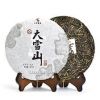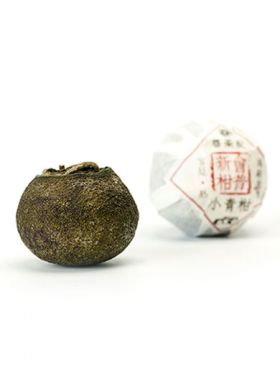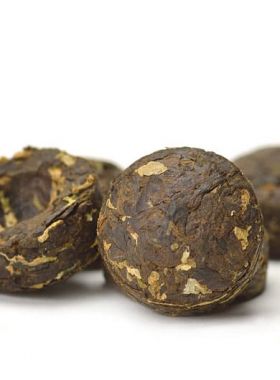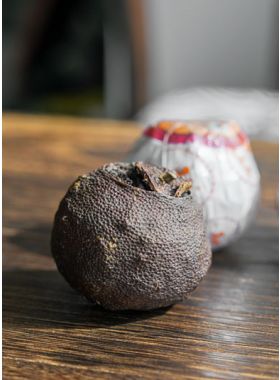-
Fast ShippingFree shipping for orders above $40
to most countries. -
Secure PaymentPay with Paypal, Credit Card …
-
Carefully SelectedFrequently Visit Tea Gardens.
Taste Repetitiously -
15 Days RefundNo Questions Asked
Refund Policy
Palace Ripened Pu-erh Brick Tea 2007
Aged woody aroma, mellow and thick
Aged woody aroma, mellow and thick
| Origin: |
Bulang Mountain, Menghai County, Xishuangbanna, Yunnan Province, China |
|---|---|
|
Harvest Date: |
June, 2007 |
|
Production Dated: |
Dec. 30, 2008 |
| Net Weight |
250g |
| Dry Leaf: |
Compressed rectangle shape, plenty of golden buds and pekoes both inside and outside |
| Aroma: |
Rich aging aroma with subtle fruit and nutty notes |
| Liquor: |
Bright red liquor with visible Cha Yun |
| Taste: |
Taste earthy, smooth, mellow and rich followed by sweet aftertaste |
| Tea Bush: |
Yunnan large-leaf tea bush species |
| Tea Garden: |
Man Xin Long Tea Garden |
| Caffeine: |
Low caffeine (less than 10% of a cup of coffee) |
| Storage: |
Store in cool, dry place away from sunlight; keep ventilated |
| Shelf Life: |
The aged the better |
Angel's Comment:
With the elegant aroma, smooth taste and golden appearance, this Palace Ripened Pu-erh Brick Tea 2007 is a great choice for ripe puerh tea lovers.
This Palace Ripened Pu-erh Brick Tea 2007 was produced in Menghai, Xishuangbanna. MengHai is the typical Pu-erh tea production area in YunNan province. Our Palace Ripened Pu-erh Brick Tea was made by the Yunnan large leaf species tea trees, the unique tea trees in this area. The large leaf species are excellent material for making teas. The palace brick tea made by large leaf species has plenty of golden buds. In ancient times, pu-erh teas of this large leaf were limited-offered, only the imperial family have chance to taste it, so it is named as Tribute/Palace Pu-erh.
Like wine, the taste of Pu-erh tea improves with each passing year. Being stored in Gancang for 10 more than years, this brick Pu-erh tea has got an obvious “Chen Xiang” (aged aroma). When brewing, it offers a very mellow and full-bodies taste first, and then accompanied by the slightly sweet taste with fast Hui Gan finish. Its liquid feels soft and silky in the mouth and throat, like “rice soup sensation”. Highly recommend for tea lovers who want to experience smooth and rich textured ripe Pu-erh tea!
 |
Cup Method |
 |
Chinese Gongfu Method |
 |
Teacup: 12oz / 355ml |  |
Gaiwan: 3.8oz / 110ml |
 |
212℉ / 100℃ |  |
212℉ / 100℃ |
 |
5g Tea |  |
10g Tea |
 |
Brewing time: 5 - 8mins |  |
12 steeps: rinse, 8s, 8s, 8s, 8s, 15s, 30s, 45s, 60s, 80s, 110s, 150s, 200s |
Man Xin Long stockaded village is located in Bulang Shan at an elevation of 1800 meters, surrounded all around by thick forests. The Bulang nationality here migrated to the area over two hundred years ago; the tea trees within the nearby 150mu were planted during that time.
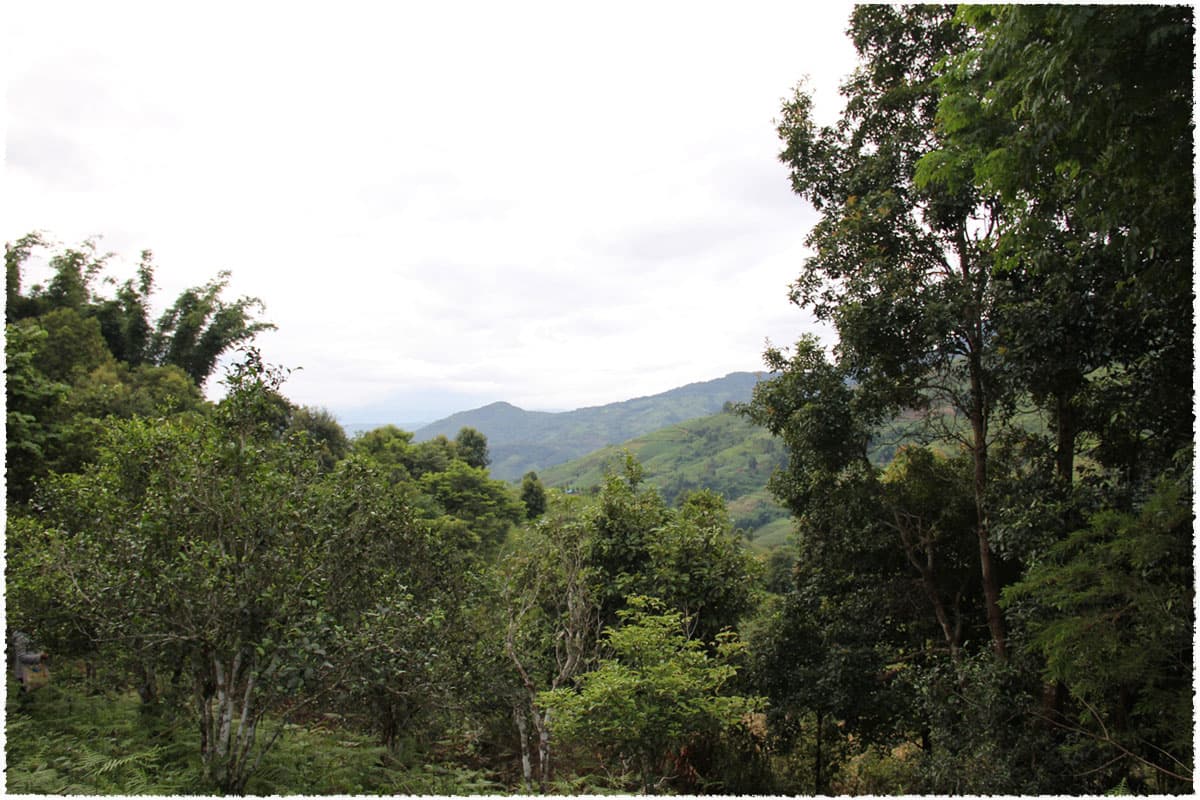
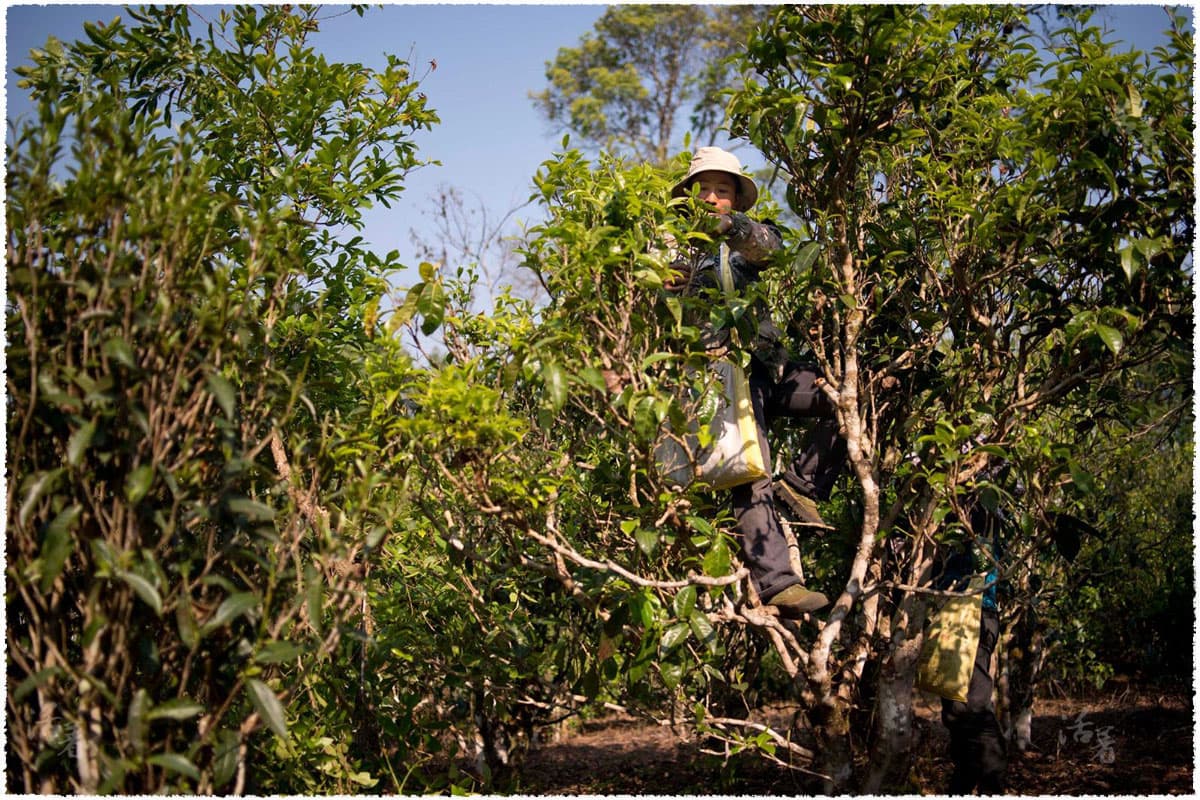
In the tea grove, tea farmers are picking tea leaves on the high tea tree.
Bulang Mountain in Menghai County of Xishuangbanna, Yunnan, is a famous pu-erh production area with the highest abundance of ancient tea trees within 100,000 hectares. The mountain rolls and stretches throughout Menghai, with deep valleys cutting through hills. The average elevation here reaches over 1200 meters, while the tall Sanduo Peak stretches up to around 2100 meters; standing there will give you a clear view of the entire mountain.
The surrounding area experiences good sunlight and abundant rainfall, being of the subtropical monsoon climate, and a remarkably short frost season. During the spring and winter, a thick, heavy fog lies around the area, while summer and autumn are most often overcast and rainy.
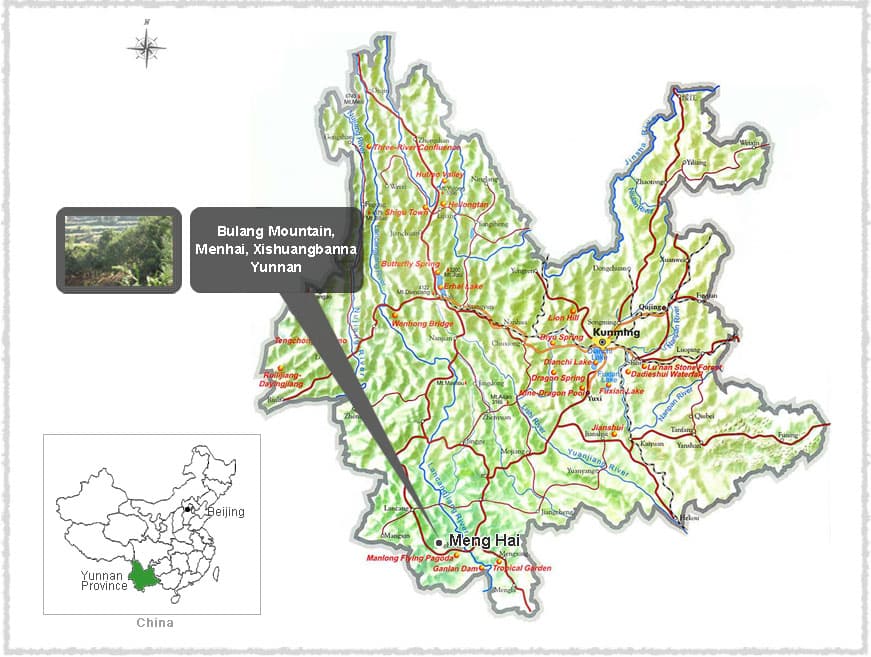
Native to Menghai County, Xishuangbanna, the Menghai large-leaf tea tree spaces was rated as the most improved national tea variety in 1984. It has the ability to grow up to 7m tall in the wild, with bold green leaves that are much larger than more common varieties. The buds of this species are most often yellow-green, and coated in fine fuzz. The leaves of this tree are high in phytochemicals: one tea bud with two leaves contains 2.3% amino acids, 32.8% polyphenolic compounds, 4.1% caffeine, and 18.2% catechinic acid. As a result, pu-erh tea made from the Menghai species is high quality and rich in flavor, with a soft taste and full-bodied essence.
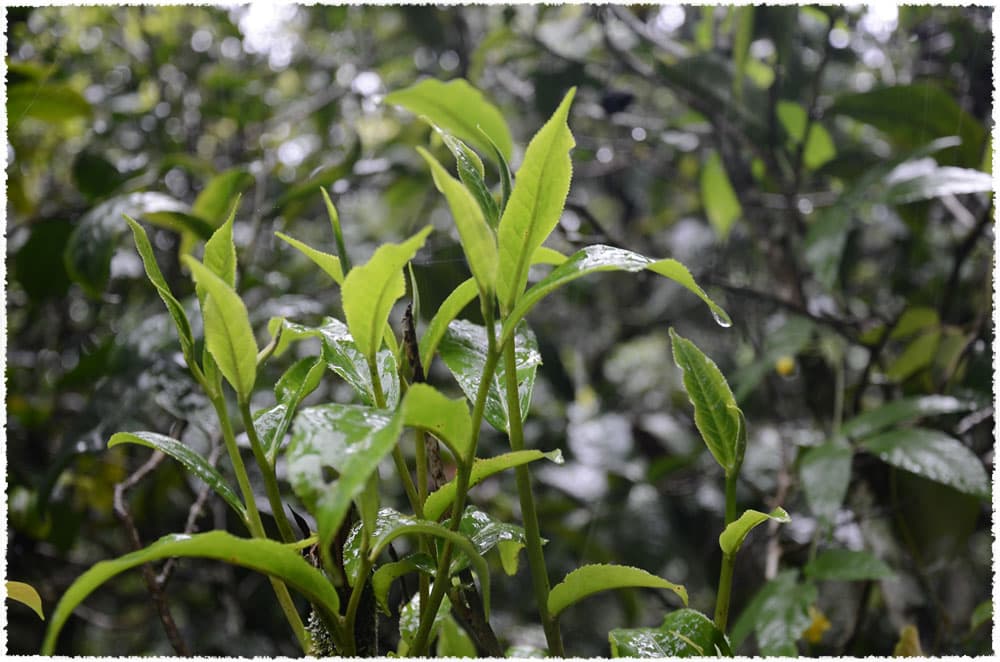
Pu-erh tea is one of the oldest types of Chinese tea, with a history stretching back over 1,700 years to the Eastern Han Dynasty, when the tea was called Jing Cha. It is named after the town of Pu’er in Yunnan province, which was the earliest trading center for this tea. In its early history pu-erh was used as a bartering currency throughout southwest China, and there the famed Cha Ma Gu Dao - or Tea Horse Road - was built especially to transport this tea through the Himalayas to other countries and areas in Tibet.
-
5 stars46
-
4 stars21
-
3 stars3
-
2 stars0
-
1 star0



